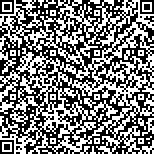| 本文已被:浏览 505次 下载 1459次 |

码上扫一扫! |
| 西藏色季拉山(阳坡)不同海拔土壤动物群落多样性时空分布特征 |
|
臧建成1,2,宋美成1,2,黄智1,2,张盼盼1,2
|
|
|
| (1.西藏农牧学院 植物科学学院, 西藏 林芝 860000;2.西藏高原资源昆虫与应用昆虫实验室, 西藏 林芝 860000) |
|
| 摘要: |
| 为了解色季拉山不同海拔、不同植被类型土壤动物群落多样性时空分布特征。于2021年5—9月,在色季拉山阳坡,海拔3 400~4 500 m范围选择8 个不同海拔,用土钻五点法采集样地0~10 cm深土样,用Tullgren漏斗分离并手捡大型土壤动物,分析土壤动物群落结构、Shannon-wiener多样性指数、Pielou均匀度指数、丰富度指数及相似性指数的时空分布动态。结果表明: 1)色季拉山(阳坡)8 个海拔共捕获土壤动物17 522 只,隶属于11纲23目63科(群)。弹尾目(Collembola)和真螨目(Eucaridae)为优势类群。土壤动物的类群数、个体数量的时空动态具有较大差异;2)海拔3 700 m的土壤动物个体数季节差异最显著(P<0.05),海拔4 400 m的土壤动物个体数季节差异最小;3)Shannon-Wiener多样性在8个海拔样地整体表现为8 月最高,7 月最低,5、6、9 月整体变化较小。Pielou均匀度8 月最高,且显著高于其他月(P<0.05);4)β多样性表明色季拉山阳坡相邻海拔土壤动物类群相似性较高,海拔差距越大相似性越低。随海拔梯度和时间变化,土壤动物的个体数、类群数、多样性均有较大差异。综上,色季拉山(阳坡)土壤动物群落多样性对季节变化及海拔梯度变化敏感。 |
| 关键词: 色季拉山 海拔梯度 土壤动物 群落多样性 时空分布 西藏 |
| DOI:10.11841/j.issn.1007-4333.2023.05.17 |
| 投稿时间:2022-08-23 |
| 基金项目:国家自然科学基金项目(41967007);西藏农牧学院研创项目(YJS2022-46) |
|
| Spatial and temporal distribution of soil animal community diversity at different altitudes in Sejila Mountain(sunny slope), Tibet |
|
ZANG Jiancheng1,2,SONG Meicheng1,2,HUANG Zhi1,2,ZHANG Panpan1,2
|
| (1.Plant Science College, Tibet Agricultural and Animal Husbandry University, Linzhi 860000, China;2.Lab of Resource and Applied Insect in the Tibet Plateau, Linzhi 860000, China) |
| Abstract: |
| The aim of this study was to understand the spatial and temporal distribution characteristics of soil animal community diversity at different altitudes and vegetation types in Sejila Mountain. From May to September, 2021, soil samples of 0-10 cm depth were collected at 8 altitudes within the range of 3 400-4 500 m on the sunny slope of Sejila Mountain. Soil macrofauna were separated by Tullgren funnel and picked up by hand. The spatial and temporal distribution dynamics of soil fauna community structure, Shannon-Wiener diversity index, Pielou evenness index, richness index and similarity index were analyzed. The results showed that: 1)A total of 17 522 soil animals, belonging to 11 classes, 23 orders, 63 families(groups), were captured at 8 altitudes in Sejila Mountain(sunny slope). Collembola and Eucaridae are the dominant groups. The spatial and temporal dynamics of the number of groups and individuals of soil animals were quite different; 2)The seasonal difference of soil animal numbers at 3 700 m above sea level was the most significant(P<0. 05), and the seasonal difference of soil animal numbers at 4 400 m above sea level was the smallest; 3)Shannon-Wiener diversity was the highest in August and the lowest in July, and the overall change was small in May, June and September. Pielou uniformity was the highest in August, and significantly higher than other months(P<0. 05); 4)β diversity showed that the similarity of soil animal groups in the adjacent elevation of the sunny slope of Sejila Mountain was high. The greater the elevation difference, the lower the similarity is. With the change of altitude gradient and month, the number of individuals, groups and diversity of soil animals are quite different. In conclusion, the diversity of soil animal community in Sejila Mountain is sensitive to seasonal changes and altitude gradient changes. |
| Key words: Sejila Mountain altitude gradient soil animals community diversity spatiotemporal distribution Tibet |